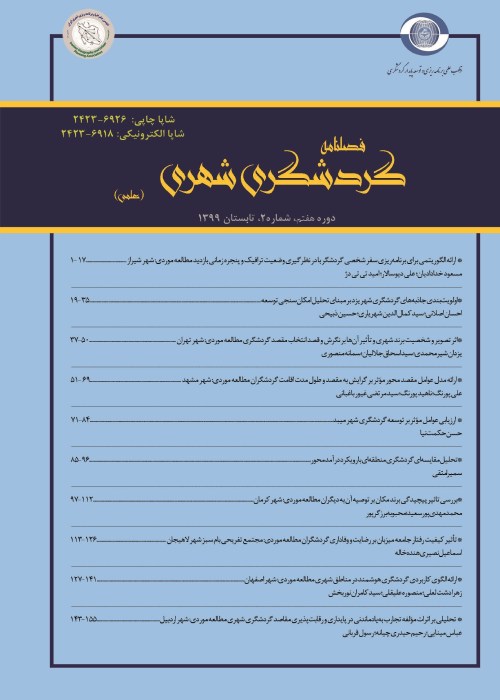Comparative Analysis of Regional Tourism with Income-Oriented Approach
In recent decades, the tourism industry, as one of the most effective service industries, creating employment and protecting the environment, has been growing rapidly and has greatly improved the economic growth of countries that according to various researchers, tourism has many economic and non-economic benefits (including cultural, social and environmental) for communities. Expansion of tourism has variety advantages that includes economic benefits such as GDP growth, reducing unemployment (creating jobs for unskilled and skilled workers, creating businesses related to housing, food, etc.), increasing the income of local and even national residents, attracting foreign investment, promoting development and diversity in other sectors, socio-cultural benefits such as cultural exchange, improvement of cultural activities, promotion of social status, social participation, protection of cultural heritage, protection and promotion of indigenous cultural values and entrepreneurship and environmental benefits such as environmental protection and natural resources, improving infrastructure and protecting the natural landscape. Accordingly, considering the expansion of this industry and its role in the economies of countries, especially developing countries without production resources, identifying the effective factors on the improvement of tourism is necessary and is of great importance. Therefore, the present study seeks to identify the key and influential factors in the development of regional tourism based on different indicators of each region (including income issues) and by dividing the regions into three sections of high, low and middle income, compare the effective indicators on tourism in different regions with the economic modeling approach.
The present study intends to compare regional tourism with income-oriented approach among low, high and middle income regions with an analytical-descriptive nature and using modeling techniques. This research is applied one in terms of purpose and the period of study is 1995 to 2015. The data included information of 120 cities in the capitals of middle, low, and high-income countries, derived from indicators of the World Tourism Organization, the World Bank, and the International Monetary Fund (IMF) and with data panel method (fixed and random effects method) and EViews 9 software have been examined.
According to the estimation of research models with fixed and random data panel methods and based on theoretical foundations and previous studies related to the research topic, three indicators of tourism cost share of GDP, per capita tourist expenditures and number of tourists are approved as dependent variables and the effect of independent variables on them was investigated. Based on the results, the share of tourism expenditure in GDP is recognized as the most appropriate regional and international tourism index and the effectiveness of economic variables on the index, showed that the variables of exchange rate, Consumer Price Index (CPI) and GDP per capita, are the most influential regional tourism indicators at the international level.
The results of comparing the effective factors on the regional tourism in all three groups of low, middle and high income, showed that the variables of exchange rate, Consumer Price Index (CPI) and GDP per capita are the most important factors affecting global tourism in all countries and all three groups are low, middle and high income countries. And this factor means that the factors affecting international and regional tourism are the same in different regions and countries.
In other words, regardless of any geographical and regional conditions, economic variables are the most effective indicators in the field of international tourism and, consequently, attracting tourists to the capitals of different countries. Meanwhile, exchange rate and GDP per capita indicators have a positive effect and Consumer Price Index (inflation) has a negative impact on tourism in different countries, which shows the steady impact of these indicators in different regions.
The coefficients of these variables also show well that the lower the inflation in different regions, and the higher the exchange rate and GDP of countries, tourism in countries (in general), will have a more appropriate trend and absorption and also the process of attracting tourists in the regions will be better. In addition, the negative and very high coefficient of price index (inflation) in all three models and for all three groups, shows that high inflation, in other words, price instability in all countries of the world, is a negative indicator in attracting foreign tourists.Also, exactly the same coefficients related to middle and high income countries, in the estimated models, show the high similarity of the two groups in the tourism sector and tourist attraction and consequently, it means that politicians and legislators in this group of countries can conform each other.
- حق عضویت دریافتی صرف حمایت از نشریات عضو و نگهداری، تکمیل و توسعه مگیران میشود.
- پرداخت حق اشتراک و دانلود مقالات اجازه بازنشر آن در سایر رسانههای چاپی و دیجیتال را به کاربر نمیدهد.



